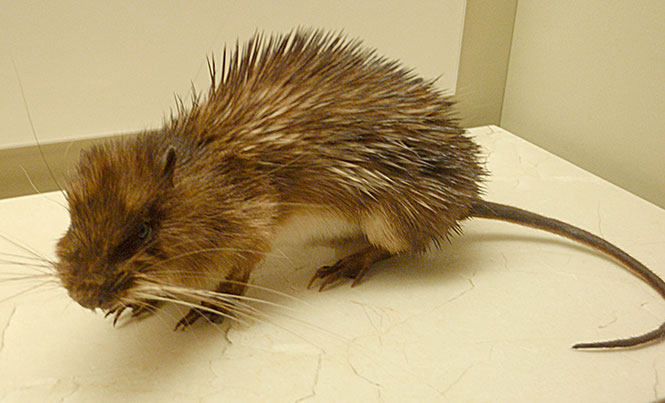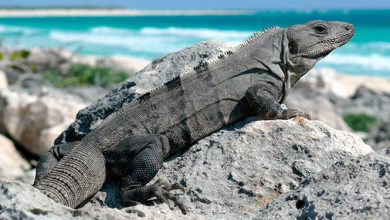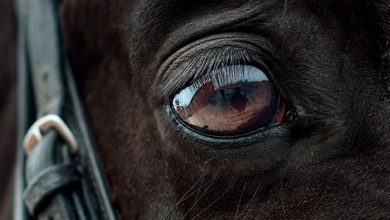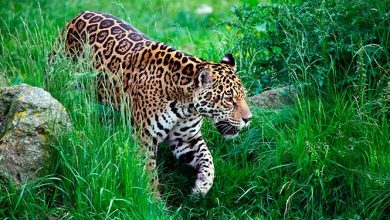A Prickly Situation

Recently, this beautiful creature has been sighted wandering in the residential areas of Playa del Carmen. Because of its small size and not so obvious quills, it has people wondering what type of animal this could be
 The solitary Mexican Hairy Dwarf Porcupine can be found living in Mexico, Costa Rica, Panamá, Guatemala, and Honduras. The porcupine belongs to the rodent family. This species is smaller than other species of porcupines; only 12 to 18 inches plus their hairless prehensile tail. The dwarf’s head is hairless, with a pink pig-like snout and dark hair that covers the body. But underneath the hair layers are the yellow colored quills. The quills are used for defense; they have micro barbs which penetrate the flesh and are painful to remove.
The solitary Mexican Hairy Dwarf Porcupine can be found living in Mexico, Costa Rica, Panamá, Guatemala, and Honduras. The porcupine belongs to the rodent family. This species is smaller than other species of porcupines; only 12 to 18 inches plus their hairless prehensile tail. The dwarf’s head is hairless, with a pink pig-like snout and dark hair that covers the body. But underneath the hair layers are the yellow colored quills. The quills are used for defense; they have micro barbs which penetrate the flesh and are painful to remove.
Contrary to popular belief, porcupines can not target you and launch quills. You need to have contact to be punctured. They are an arboreal species and spend their nights foraging for fruit, leaves, and seeds. It is typically a docile, silent animal and only vocal during mating season. There is not a lot of information about this animal. It is believed they are polygynandrous and mate throughout the year producing one pup each pregnancy. The pups are born with soft quills which harden up in about three days. The threats to this animal are loss of habit, being prey to larger animals, traffic, and illegal hunting.
There are many published articles about snakes that have fed on porcupine and died from quills puncturing the lining of the gut-a porcupine revenge. Indigenous people believe their fat and skin have medicinal purposes, and the skin and quills were used for traditional clothing and headdresses. They are not on the endangered list, but as more and more habitat disappears, the Mexican Hairy Dwarf Porcupine is becoming a threatened species.







